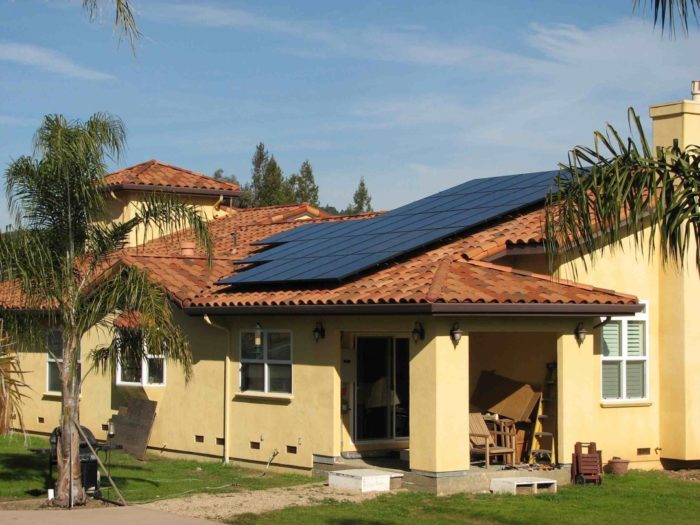
Image Credit: City of San Jose
The proliferation of rooftop photovoltaic installations is making some electric utilities nervous, according to a report in The New York Times.
Utilities in some states would like to see reductions in net-metering plans, which require them to provide a credit to residential and commercial customers for excess power they generate. Although rooftop installations account for less than 1% of the nation’s electricity supply, utilities are concerned that PV may eventually challenge their long-term ability to maintain the grid.
A combination of tax credits and net-metering has encouraged more people to install PV. In California, for example, solar installations increased by 160% a year between 2010 and 2012. The state’s three major utilities estimate they will have to make up almost $1.4 billion a year in revenue, which will come from non-solar customers. If the costs were distributed evenly, that would amount to $185 a year for each customer, according to The Times.
“If the costs to maintain the grid are not being borne by some customers, then other customers have to bear a bigger and bigger portion,” Steve Malnight, a vice president at Pacific Gas and Electric, told the newspaper. “As those costs get shifted, that leads to higher and higher rates for customers who don’t take advantage of solar.”
California utilities unsuccessfully sought to cut back the net-metering program last year. But the state legislature did order the California Public Utilities Commission to study the implications of rooftop solar for both customers and utilities. Utilities in Arizona and North Carolina have also sought changes in rules covering credits to owners of residential PV systems.
Weekly Newsletter
Get building science and energy efficiency advice, plus special offers, in your inbox.





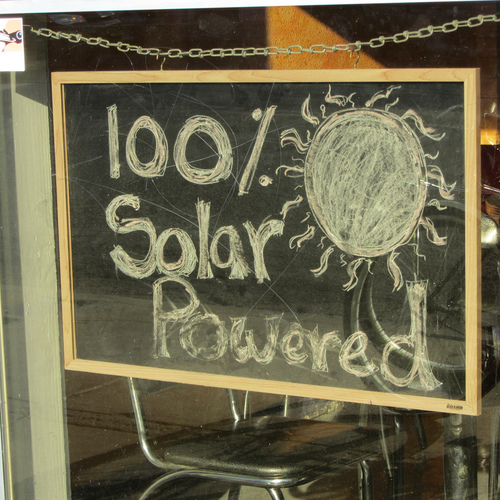
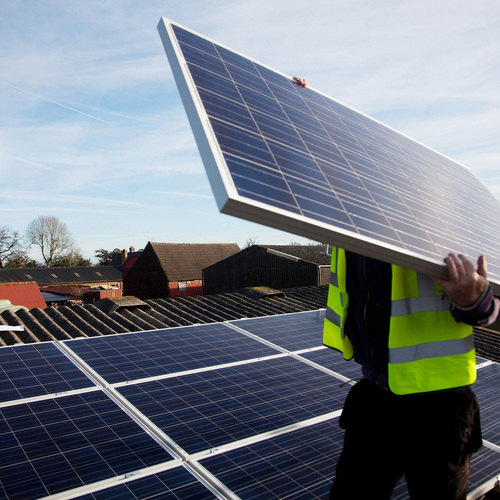
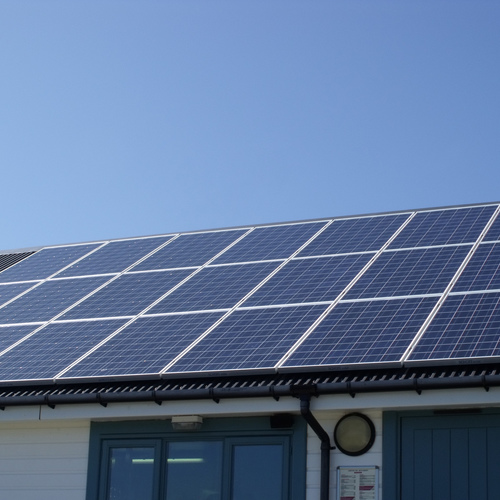
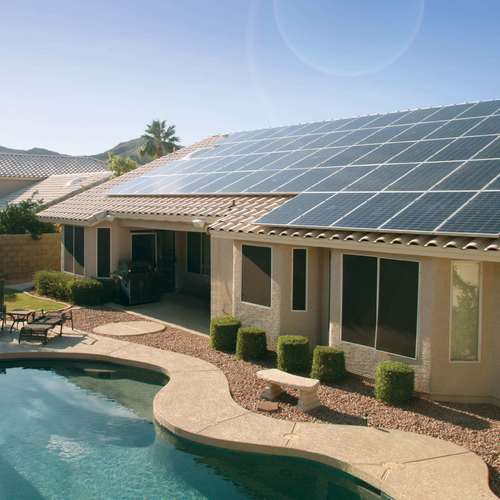






15 Comments
Grid costs
It seems like the simplest solution to the "grid cost sharing" argument is to charge a flat fee for the real cost of customer grid attachment, and keep that completely separate from per-kWh energy charges.
The other factor not included in their argument is whether (or not) distributed solar actually reduces the utility's grid costs by reducing the need for transmission, substations, etc during peak hours.
Austin Energy designed a "value of solar" rate which tries to take into account the costs & benefits of distributed solar production. Minnesota has recently passed legislation which will investigate a similar setup.
Remove the Subsidies
The legitimate issue is that the existing utility infrastructure was built and maintained over decades. Solar system that net-meter use said system with no regard to the grid cost of maintenance. If you are on the grid is makes no difference if during peak hours your solar system is contributing to the grid as it pertains to the grid's maintenance. Also, if peak demand is being met by the grid then it is of extra cost to the taxpayer and customers not using solar owed to subsidies, existing grid maintenance, and subsidy costs as the grid stores no energy.
The best solution is for solar owners to include storage and completely disconnect from the grid. This is unlikely to happen as PPAs are a means of circumventing storage and accountability for the grid. Remove the subsidies for all parties, and address the real-cost of owning solar and the homeowner will arrive to a better understanding of solar power and likely purchase a comprehensive system versus a subsidized system.
Response to Solyent Green
Solyent,
You wrote, "The best solution is for solar owners to include storage and completely disconnect from the grid."
I strongly disagree. Your solution requires large banks of lead-acid batteries. Off-grid homeowners who follow your advice will find that they don't have enough energy in the winter (and therefore will need to buy a gas-powered generator, which causes pollution). They will also find that they produce so much unneeded energy during the summer that the PV electricity they produce is wasted. Neither the energy shortfall during the winter nor the energy waste during the summer is environmentally desirable.
Response to Soylent Green
Well, that's exactly why I said that grid connection costs should be evenly and transparently borne by everyone who is attached, as a first cut, and not hide those costs within per-kWh energy charges which may zero out for some. If it can be shown that solar producing customers have any additional net benefit (or cost, for that matter), adjust the fees accordingly. Otherwise this just looks like an excuse to protect a market built around centralized production from distributed producers.
PV Owners already pay for maintenance
I can only speak for the utility I am a member of in New Hampshire. We pay a flat fee of $24.17 'member service charge' regardless of if we net produce or consume per month. For instance several of these recent summer months our PV system has produced more than we used, but we still have been subject to the member service charge each month. Seems like more than enough to cover my portion of the infrastructure that the utility has to maintain.
Cost shifting -- or -- profit shifting?
Yes, the investor owned electric utilities feel threatened. But not just by roof top SolarPV; but also by energy efficiency programs, high performance buildings, and passive house homes. The argument is that solarPV shifts costs from WEALTHY PV owners to the many old, weak and feeble that can't possibly afford solar. A great play on emotions - and it does a great job diverting the topic.
Many of the non-renewable folks like to point out that solarPV customers need the grid for backup - because the sun doesn't always shine. Quite true, and during that time, and over night, during the long winter hours, solarPV roof top customers are indeed using energy from the grid AND they pay a portion of the costs that are intended to cover operation and maintenance of the local distribution system.
The issue is about profits and capital recovery. The business model that nearly all investor owned utility rates are based on -- is one of volumetric pricing. The utility company is able to charge a base fee, the cost of the electricity, operation & maintenance, transmission and distribution costs AND PROFIT by the kWh. SolarPV customers -- very energy efficient customers, use little power. The PROFIT from such customers is quite small, but they have been promising 10% ROI to investors on Wall Street. Efficient houses and distributed generation (solar) houses eat into the promised profit margins. Low sales of electricity -- while they can recover costs - they can't recover profit.
The bulk of the costs for utilties comes from the generation of the electricity, the transmission and the distribution. Energy efficiency programs cut down the charges for all three of these cost centers - if the power used is zero, you simply aren't using energy from the generators, etc. Roof top solarPV, reduces the use of the generation and transmission cost centers. The local distribution is still there - but the costs there are likely to be offset - because the energy from the roof top of one house moves to a nearby house. The neighbor house pays the utility based on kWh - they believe they are paying for the distant generation and transmission of the electricity -- but really the energy is coming from a very short distance. The non-SolarPV customer doesn't get a lower price for not using the generator or transmission ... that money is intended to help offset the loss of revenue by the solarPV customer.
Where the utility loses money in the deal -- are the profits that might have been paid by the customer IF they did not have solarPV. If the utilities are successful in arguing that you must use a certain amount of energy to pay your fair share of costs -- then it is very reasonable to expect that every metered connection will pay a portion of the costs.
Now how do you allocate the costs. If you are a few miles from a substation - the costs of the overhead distribution lines are far more expensive than the cost of the buried lines paid for and installed by the developer. It would be reasonable to expect that the distribution costs would also be billed based on your distance from the substation.
The break down can go on and on -- the costs have been lumped together and not split out by cost centers because --- it really is quite confusing for most customers AND the rate structures have always been designed such that some residential customers pay a higher portion of their costs than others - as part of the means to keep electricity affordable.
The proposed changes in Arizona - for example appear to be designed to recover all costs including profits from the solarPV customer. That is good for the wall street shareholders of the utility, but it also means that the roof top solarPV home owner may not recover their capital expense associated with installing the solar. Tell the utility that they can not recover the capital cost of a new power plant and the next words will be APPEAL and SUE.
The times article doesn't do a good job looking at avoided costs that solarPV brings to the plate. Reduced generation, reduced transmission costs and even longer life on the distribution transformers. It does publish the point of view of the utility and wall street.....
And for those that have been building a passive house -- watch your backs a target is painted on anyone that doesn't meet the minimal use...
if you are connected to the
if you are connected to the grid, surely there must be a "maintenance fee" or service charge integrated into the bill. If their argument is "lost revenue due to folks producing their own electricity", then they should look at how their revenue is allocated towards maintenance and how to operate more efficiently.
Alternative Turnoff
First, I am for solar. The hard reality is that is the energy efficient homeowner against the utility companies —should get off the grid and cease the argument. Stop the subsidies to both utility companies and energy efficient users, period. Hence, no further argument(s).
It never ceases to amaze me how people feel they are entitled, hock fear mongering ("...watch your backs a target is painted on anyone that doesn't meet the minimal use..."), want the benefits of a common infrastructure such as roadways, utilities, and public services and then turn right around without any constructive solutions and lambast them. Screw the utility companies, but make darn sure if they need their power and don't get it, they'll damn them even further and hear from them. They want it all--and they want it their way. This is one of the biggest turnoffs of the alternative utilities that makes potential users, like me, reconsider endeavoring with such utilities and some of what I found to be the slimiest businesses I have ever encountered.
Power all the street lights and stop signals by yourselves. Lobby for no more utility infrastructure on new housing/commercial projects and that they be run solely by alternative energies--off all existing grid (water, sewer, gas and electric). If you've dealt with bringing utilities to a project then you know the cost is not inexpensive, so just do away with these utilities in the future. Dismantle the utility companies because obviously they are all corrupt and do little in the way for the utility end user. Monopoly, oligopoly? You don't believe that these alternative energy companies are not about the money too? Wake up.
Response to Solyent Green
Solyent,
Your proposal -- "Lobby for no more utility infrastructure on new housing/commercial projects and that they be run solely by alternative energies, off all existing grid (water, sewer, gas and electric)" -- is wildly impractical. If you had lived off the grid for 40 years, as I have, I think you would understand why.
Response to Shane Clafin
Money is collected in the rates to cover maintenance of the various pieces of the grid. However utilities have sometimes diverted the money to cover the cost of grid expansion or distribution expansion so they can attract more customers. Remember profits come from increased sales.
Naperville, IL was an example of that... they looked at their power outages, distribution system problems and changed the model (long before renewables) so that expansion and new customers pay a slightly higher rate that covers the expansion that is needed to support them. Once that cost is done, the rate drops down to same as the rest of the community. Because expansion is paid for out of different tariff -- they then used the funds that had been collected from everyone -- to upgrade their network and distribution system. Over 17 years they cut their power outages from 120+ minutes a year to about 18 minutes a year. Good study from non-profit "GalivnPower" (former CEO of motorola). http://www.galvinpower.org/sites/default/files/Electricity_Reliability_031611.pdf
Few utilities have followed Naperville's example. Most still siphon money from O&M budgets to cover new business development and expansion. Another reason why some utilities don't like net-metering... loss of revenue that can be used to expand the business; never mind it really was supposed to be used on maintenance...
Retail versus Wholesale
I think there has to be an acceptance by PV suppliers to a grid that the power they purchase is retail power and power they sell back is wholesale and will therefore have some discount, particularly related to it's timing. The charges for the grid infrastructure are often as a standard charge for all users or incorporated into the power rate .It might be hard to gauge without detailed study the effect of a lot of PV on the infrastructure costs as there are arguments both ways.
The real driver of the PV wholesale discount (accepting the supplier will want some profit margin built in) is the cost of providing power plants that can manage demand peaks coupled with the cost of power from other sources eg gas. Most utility usage profiles have a peak early morning settling back to steady daytime demand and then peaking early evening before a low nighttime load. PV can't align well with this, particularly in winter months and is, of course, weather affected.
This is where smart meters come in. If power prices vary during the day according to true costs households and industry may be motivated to adapt usage to better match PV production.
RE:Retail vs Wholesale
Peter, If as a roof top solar customer that must pay a portion of the distribution costs (APS), why would I want to sell my power to the utility at wholesale - if a neighbor is willing to buy my excess power at twice the wholesale, but below the APS retail?
If as some suggest that we remove the subsidies and market constraints -- I should be able to do just that. With all the installed smart meters (which were designed to support renewables and short time intervals), and the GIS systems that utilities have implemented to track their grid assets. It would be very easy to show that power I produce offsets the power that "my" customer might have chosen to buy. I would recovery more of my costs, the neighbor (my customer) would have a lower bill.
The electric industries argument about net-metering isn't about fairness. It is about how to prevent the collapse of a business model based on volume sales - in a time when the sales volume is disappearing and disruptive technologies such as roof top solarPV and high performance residential homes are now becoming more common.
The battle is about whether they can delay adoption of the disruptive technologies, or if they change and adapted their business model, or they get run over by the changes of the future.
RE:Soylent Green
If you are for solar, you would under stand more of the economics - from both the solar side and the utilty side. Instead you are repeating pretty much the game plan that comes from the Edison Electric Institute - in which they've declared that renewables, solar and solar net-metering are the largest single threat against their existence. Included in the list of fears are microgrids...
If you look at the rhetoric that they are giving, if you attend enough engineering conferences, and read the power engineering journals - you soon realize that the concern of solarPV also does indeed extend to energy efficient homes.
Further evidence of that is that a few states NC for example has been fighting even the simplest LEED standards, most have fought the adoption of the new IECC 2012 for energy efficiency improvements, and they fight even the simplest changes for lightbulbs and ceiling fans. The utilities are running scared. Not from just solar - but the changes around them because volume is flat and revenue is flat. Earnest & Young reported recently in one of their reports that the outlook for growth in the electric utilities was a concern and investment grade ratings will lower. That is for all the investor owned utilities - not just the utilities with solarPV or renewables.
A rough sketch of a what a load duration curve for a utility looks like. Its rough an focuses on the high demand time. But the chart also shows the impact of energy efficiency and that the baseline curve lowers. As the curve lowers utilities with volumetric pricing and not decoupled see MAJOR drops in profit. EVEN without solar.
If you move all the way to the left the price climbs off the chart. That is the peak cost time when utilities must buy power on the spot markets. Last spring the peak cap for spot markets was set at $9000/MWh in ERCOT's area (Texas)... that is $9/kWh. Peak in Texas occur in the afternoon and early evening. Airconditioners run morning through the evening. SolarPV shaves a large portion of that peak helping prevent the $9000/MWh charge to the local utility.
Response to Dennis Heidner
Please, do not tell me how my understanding of solar should be...I'll make that decision. Also, rather than cherry-pick examples, as you have ERCOT, why not expand your sample to provide more meaningful data? Also, PPA providers remind me of nothing more than the subprime mortgage market.
RE:Solyent Green
So visit the FERC site and look at the day ahead prices. In 2012 PJM peak pricing went from an average of $25/Mwh to $150/MWhr. The PJM prices were based on average actual expenses. ERCOT was the absolute cap for their market.
http://www.ferc.gov/market-oversight/mkt-electric/pjm.asp#prices
I'm perplexed about PPA, an analogy in other industries are hedges -- SouthWest Airlines survived the fuel crunches in 2006/2007 because of their futures they bought. PPA's are generally long term contract sales of power to a utility. And you are PPA equating that with subprime mortgages. Are you expecting utilities to fail? The utility is the buyer of the contract...
Log in or create an account to post a comment.
Sign up Log in